Companies often face misalignment and confusion due to broad job descriptions. Role profiling precisely defines responsibilities, skills, and qualifications, attracting top talent and increasing engagement. Role profiles are designed to align with a company’s culture, vision, and values, establishing a structured workforce, aiding in talent acquisition and performance management, and providing strategic insights. AI has the power to enhance role profiling by complementing human expertise, but to ensure that role profiles remain aligned with the people-aspect of the organisation, the human element needs to remain central. At Multiplex Partners, our approach combines human expertise with AI to deliver advanced role profiling solutions, building cohesive, productive, and future-ready teams.
We are seeing many companies on a hiring spree, reflecting a broader trend of growing employment and economic recovery. President Ramaphosa, in his State of the Nation Address (8 February 2024), highlighted this positive shift, noting the substantial increase in the number of employed South Africans from 8 million in 1994 to over 16.7 million today[1]. This surge in employment is not just a recovery from the COVID-19 pandemic but an indication of a robust job market that’s gaining momentum. Over the past two years, job creation has consistently risen each quarter. The Statistics SA Quarterly Labour Force Survey further supports this trend, showing a 6.2% increase in total employment over the past year. This growth suggests that businesses are optimistic about the future, investing in talent to drive their expansion and success.
But we ask, why do companies hire new talent? Often, to scale and become more efficient. New employees join with hopes of advancing their careers and contributing to the company’s success. Despite these aligned intentions during recruitment, the clarity often ends there. With broad job descriptions like “to grow the company,” leaders are left hopeful while employees are left confused as what may seem clear to business leaders is often ambiguous to those hired to achieve these goals, leading to misalignment and potential failure.
We know that for teams to perform well, members need a clear understanding of what good work looks like, what is expected of them, and what going above and beyond entails. One of the most effective ways to provide clarity is through role profiling. This process involves a precise delineation of responsibilities, skills, and qualifications for each role within the organisation. Such clarity not only aids in attracting and recruiting top-tier talent but also in developing employees who align and engage with the company’s goals, vision, and mission.
For a company to succeed, employees need to be engaged. Research shows that highly engaged teams can increase productivity by 21%[2]. However, when people don’t understand their roles within a team or when there’s no agreement on roles, the team’s ability to work effectively and self-organise is greatly diminished[3]. This is where role profiling becomes essential.

What is role profiling & where does it come from?
The evolution of role profiling in organisational development traces back to the early 20th century with the advent of scientific management principles introduced by Frederick Taylor[4]. Initially, job roles were defined through time-and-motion studies aimed at maximising efficiency. As organisations grew more complex, the need for a deeper understanding of roles became evident. In the mid-20th century, human resource management theories began to emphasise the importance of aligning individual capabilities with organisational goals. This period saw the development of more sophisticated job analysis techniques.
By the late 20th and early 21st centuries, the advent of technology and data analytics transformed role profiling, incorporating psychological assessments, competency frameworks, and continuous feedback mechanisms. This modern approach reflects a shift from a purely task-oriented view to one that considers the interplay of skills, behaviours, and organisational culture. Today, role profiling involves gathering and analysing information about specific jobs to create comprehensive profiles that outline key outputs, responsibilities, skills, qualifications, and other relevant aspects.
Drawing from over 26 years of extensive organisational development experience, Multiplex has refined its approach to role profiling. Our methodology, informed by a comprehensive library of thousands of profiles, is further enriched by collaboration with psychometrists and organisational development specialists to develop robust competency frameworks. This nuanced approach allows us to craft individualised role profiles that serve as clear management documents. These profiles streamline essential processes such as selection, development, succession planning, and performance management, supporting organisations in maximising their human capital potential.
While our experience spans diverse industries, we recognise that the essence of a role profile lies in its alignment with the organisation’s unique culture, vision, and values. Unlike a one-size-fits-all approach, effective role profiling demands a tailored understanding of each organisation’s nuances. While companies within similar industries may share common outputs, the intricacies of their organisational fabric are revealed only through direct engagement with business leaders. Thus, role profiling emerges as a collaborative activity, thriving on our expertise and the intimate knowledge of our clients.
The value of role profiling
We speak about how role profiling takes the guesswork out of HR by contributing to establishing a structured and efficient workforce, adding value and predictability, and facilitating better decision-making in talent acquisition, performance management, and career development. There is often the misconception that role profiles are constructed solely for HR use, but role profiling has the potential to be much more than just a tool for HR. By providing a comprehensive understanding of each role within the organisation, role profiling equips senior leadership with valuable insights into their workforce’s capabilities and potential. Armed with this knowledge, strategic leaders can make informed decisions about talent allocation, succession planning, and organisational restructuring. Additionally, role profiling enables leaders to identify skill gaps and development opportunities, aligning individual strengths with strategic objectives.
Effective role profiling plays a pivotal role in fostering team cohesion and enhancing productivity within organisations. By providing clear guidelines on individual responsibilities, skills, and qualifications, role profiling ensures that team members understand their roles and how they contribute to the overall objectives of the team. This clarity minimises confusion and conflicts, enabling teams to work together more cohesively towards shared goals. When team members are unsure of their responsibilities or lack clarity on expectations, it can lead to duplication of efforts, gaps in accountability, and a decline in morale. This can ultimately result in decreased productivity and hinder the team’s ability to achieve its objectives.
For role profiling to have its greatest impact, however, they need to be more than documents in a folder that get revised at each annual performance appraisal. They must be dynamic tools that evolve alongside the organisation’s changing needs and priorities. Regular reviews and updates are essential to ensure that role profiles remain aligned with the company’s strategic objectives and evolving industry trends. They should be continuously brought to life through ongoing discussions and feedback sessions with employees. This collaborative and iterative approach not only ensures that roles are accurately defined but also empowers employees to take ownership of their responsibilities and career development. Moreover, role profiles should be aligned with other business processes, such as strategy refinement, recruitment, training, and talent management, to maximise their effectiveness in driving organisational success.

Demonstrating the value of role profiles: a case study
For some, the value of role profiles might still seem ambiguous. To illustrate their impact, let’s examine a fictionalised company, Tech Innovators Inc. This case study highlights how role profiling can significantly enhance both operational efficiency and employee well-being.
Tech Innovators Inc., a rapidly growing software development firm, faced challenges with team productivity and employee satisfaction. Among various leadership and organisational issues, a core complaint was the ambiguity surrounding individual roles. Recognising the need for change, they embarked on a comprehensive role profiling project. Partnering with us, they developed detailed role profiles for each position within the company, outlining key responsibilities, required skills, and performance expectations. This initiative involved one-on-one meetings with employees, discussions with business leaders, and consultations with senior management to ensure accurate and thorough profiles.
The outcomes were significant. Clarity in roles led to enhanced team cohesion as employees better understood their contributions to projects and broader company goals. Productivity soared, with teams completing projects 20% faster on average, and there was a notable increase in innovation and problem-solving efficiency. Employee satisfaction also improved, reflected in a 30% decrease in turnover rates and higher engagement scores in internal surveys. Managers reported that the role profiles were instrumental in streamlining recruitment, onboarding, and performance management processes, ultimately leading to a more agile and effective workforce.
A place for role profiling in the age of AI
The future of role profiling is being shaped by rapid advancements in technology, with artificial intelligence (AI) at the forefront of this transformation. As organisations strive to stay competitive, the integration of AI into role profiling processes is revolutionising how we understand and optimise roles within a company. At Multiplex, we are at the cutting edge of this innovation, leveraging AI to enhance the accuracy, efficiency, and effectiveness of our role profiling solutions.
Our clients have asked us if there is still a place for human-powered role profiles in organisational development. We feel AI is not a replacement for the human touch in role profiling but rather, a powerful strengthener. By harnessing the capabilities of AI, we can analyse vast amounts of data with unprecedented speed and precision. This allows us to identify patterns, predict future skill requirements, and provide more nuanced insights into each role than we’ve ever been able to before. Our AI-driven tools can quickly process information from various sources, such as industry trends, and organisational goals, to create dynamic and adaptable role profiles. This integration ensures that our role profiles are not only comprehensive but also agile, evolving in real-time to meet the changing needs of the business.
At Multiplex, we believe that the future of role profiling lies in the synergy between human expertise and technological innovation. Our team of experienced professionals works alongside AI to interpret data, apply contextual understanding, and ensure that the human element remains central to our role profiling process. This collaborative approach allows us to deliver solutions that are not only technologically advanced but also deeply resonant with the human aspects of organisational development.
As we look ahead, we are excited about the possibilities that AI and other emerging technologies bring to role profiling. Our commitment to staying at the forefront of these innovations ensures that our clients receive the most effective and forward-thinking solutions available. By integrating AI into our role profiling processes, we are empowering organisations to build more cohesive, productive, and future-ready teams, driving success in an increasingly complex and competitive world.

Conclusion
In today’s rapidly evolving job market, role profiling has become essential for organisational success. By aligning roles with the company’s culture and strategic goals, role profiling not only enhances team cohesion and productivity but also fosters employee satisfaction and retention. The integration of AI and advanced data analytics further strengthens this process, providing dynamic, real-time insights that drive informed decision-making. Role profiling offers immense value by providing clarity and alignment within organisations, enhancing team cohesion, boosting productivity, and improving employee satisfaction. By precisely defining roles and responsibilities, businesses can optimise their workforce and drive strategic success.
At Multiplex, we combine human expertise with cutting-edge technology to deliver tailored role profiling solutions that empower your workforce and ensure your organisation’s growth and efficiency. To explore how role profiling can benefit your organisation, schedule a meeting with me at maddy@multiplexpartners.com. Let’s discuss how we can help you harness the power of role profiling for your team’s success
References
[1] https://www.stateofthenation.gov.za/priorities/growing-the-economy-and-jobs
[2] Clifton, J. and Harter, J.K., 2019. It’s the Manager: Gallup finds the quality of managers and team leaders is the single biggest factor in your organization’s long-term success. Washington, DC, USA:: Gallup Press.
[3] Barke, H. and Prechelt, L., 2019. Role clarity deficiencies can wreck agile teams. PeerJ Computer Science, 5, p.e241.
[4] Taylor, F.W., 2004. Scientific management. Routledge.

